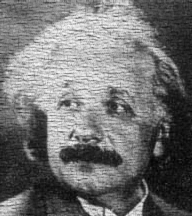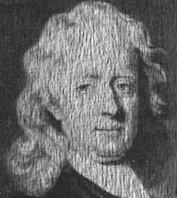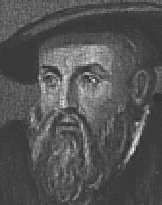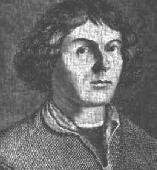|
Today the truth, as we recognize it, is that all life
that we know of lives inside an air bubble, floating
atop a pocket of water
on a wobbly rock dizzly spinning daily as it orbits annually about an active
hydrogen fueled nuclear fusion star which is at the center of a diverse
planetary system. Our relatively tiny orb is protected from the star's radioactive
energy
emitted as electromagnetic rays laced with cosmic particles by a magnetic
shield emanating from inside its churning molten core. This solar system
hurtles through space at hundreds of miles per second inhabiting the outskirts
of a milky galaxy that rotates around a nebulous black hole as a part of
a vast Universe.
The known Universe is a collection of trillions of celestial bodies accelerating
outwards originated from a massive explosion. This ancient conflagration
at the beginning of our universal time
was created from the all existing matter compressed
into an infinitely small singularity point and then blasted into empty space
in a tremendous Big Bang. These truths of physics have been established
through the great works of Nicolaus Copernicus (1473 - 1543), Johan Kepler
(1571-1630), Issac Newton (1642 - 1727) and Albert Einstein (1879-1955).
They are the facts that form the commonly accepted tenets of the Western
civilization's scientific community. They are demonstrably provable to a
high level of confidence through empirical examination, except the last
part about the inception point of the Universe which is a theoretical hypothesis
extrapolated from Einstien's relativity theories and empirical the evidence.
The idea of everything in the Universe being condensed and then expelled
from an infinitely small point into our 3-dimensional space is about as
difficult a thing to conceive of as anything that could possibly be imagined.
Call this an impossible truth. Something that has been accepted on the basis
of the scientific observances, but is difficult to fathom. This was once
the case about the hypothesis speculating on a round earth.
There was a point in history when the former truths were evident from
the observable scientific data. Obviously, if the earth was spherical like
a ball people would start to fall off as they walked toward the bottom.
A flat world was the socially accepted state of scientific truth until Newton
effectively explained gravity as it related
to planets. The sun, the moon and the stars crossing the sky was another
empirically viewable fact. Yet, there was a persistence of subtle clues
that contradicted this cultural notion of a plane earth in the middle of
all creation. There were clear inconsistencies to a theory that we lived
on a flat world with round orbs circling it. Hints to a bigger reality were
seen by a few visionary thinkers like Copernicus who speculated on the heliocentricity
of our solar system. Until the calculated retrograde planetary movements
was explained with measurable accuracy by Kepler which gave the proof that
led to logical formation of the heliocentric solar system, the accepted
known truth was a flat earth at center of the Universe. A geocentric model
of our solar system was clearly not deducible through verifiable facts,
but more symbolic of the state of the ego of the collective self.
The brave scientists that studied these enigmas in physics went against
the grain of established thought. By grasping concepts in the areas that
science was lacking and challenging accepted social truths they were able
to solve the mysteries of their times and cross the boundaries of established
thinking.
KWYDK stands for Know What You Don't Know. It basically means to be aware
of areas which are either tenuous, suspect or absent by looking at the observable
clues. It is an effort to discover the next unknown truths through a wiki
social consciousness. Throughout each era we construct scientific tenets
which conform into the collective societal belief systems of the time. When
innovative theoreticians question the pillars of the science and religious
dogma about the physical reality in which they exist they expand the social
human consciousness. When questioning the embraced scientific facts there
is sometimes a backlash. When knocking down the walls that support the temples
of existing knowledge on which we base our common view of reality there
can be a defensive reaction. The above dissertation of our continually evolving
ideas is a good example of the concept of KWYDK in courageous men who confronted
commonly held notions and published their theories to allow others to know
that which they don't yet know. We are the products of our accepted scientific
truths, but to truly know what we don't know means that every truth is debatable
and we must be open to searching for hidden truths that remain beyond our
current reach. |







